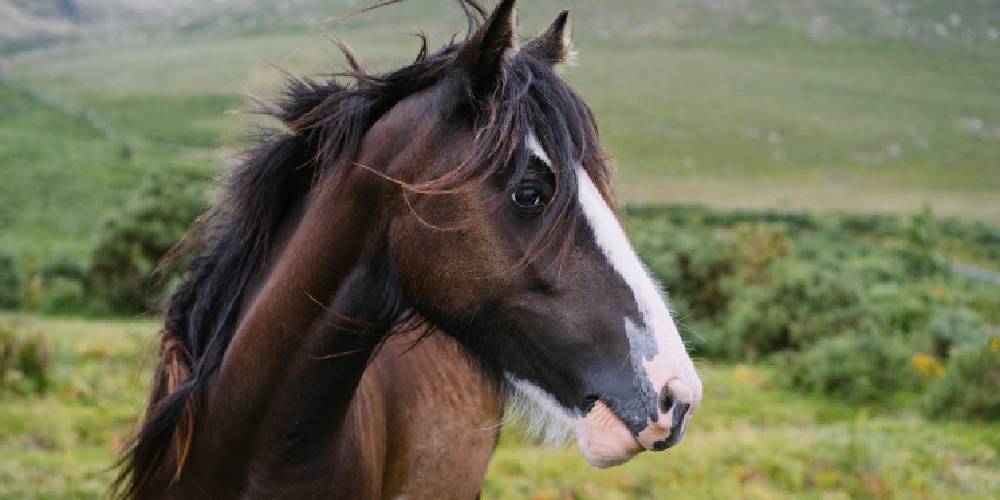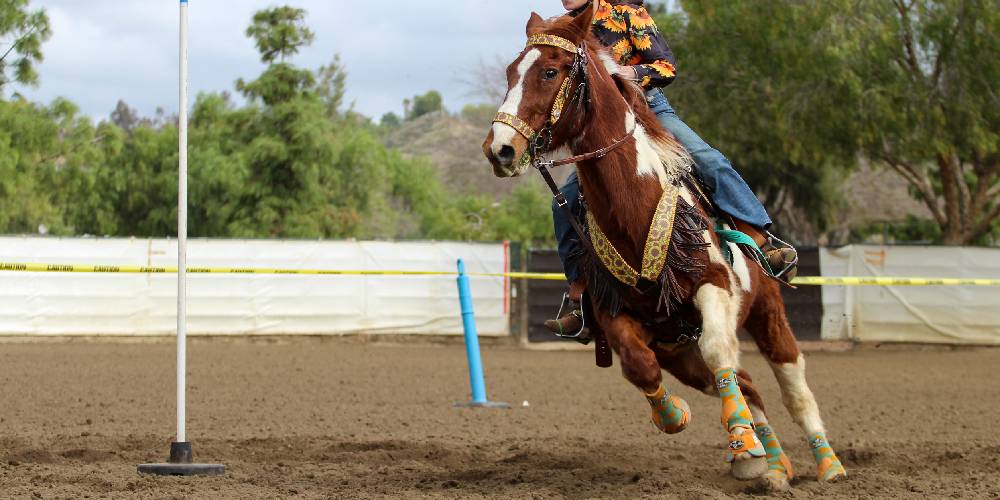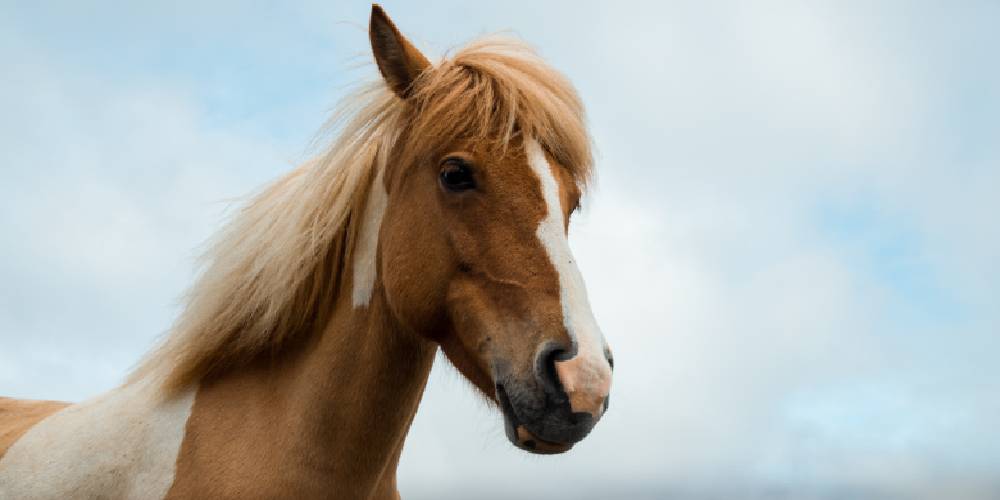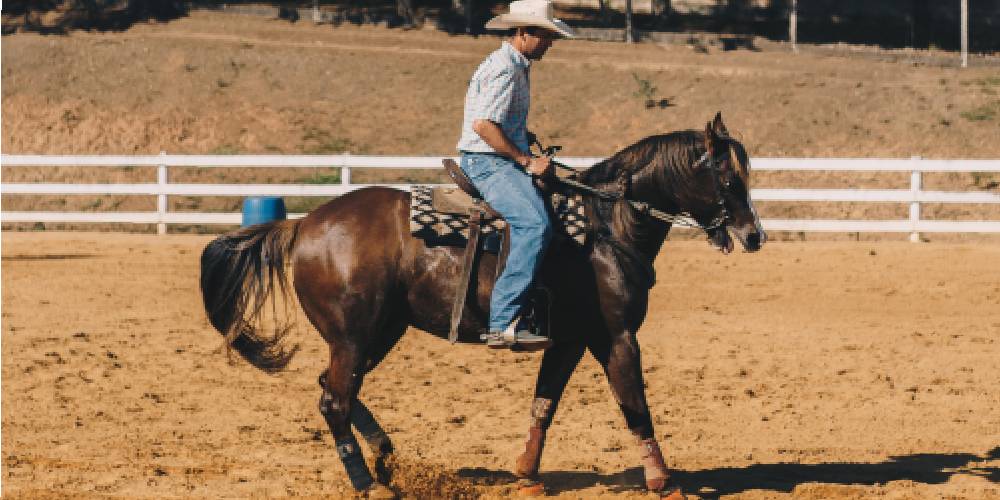Recently, I have been looking to buy a middle-aged lesson horse to begin giving beginner-level riding lessons on. A lot of the horses I looked at were described as ‘grade.’ Not knowing what this meant, I decided to do a little research to find out what this description meant.
What Does The Term ‘Grade’ Mean In Horses

When a horse is described as ‘grade’ it basically means that the horse is mixed bred, unregistered, or has an unknown pedigree. This term is mainly is used when a horse is for sale to describe the ‘breed.’ Sometimes, horses that are known to be full, or part of a breed will be described as, for example, ‘grade Quarter Horse’ or ‘grade Thoroughbred’ or whatever breed they are thought to be. Calling a horse ‘grade’ is the equivalent of calling a dog a ‘mutt.’
Can You Show A Grade Horse?

This is kind of a difficult question to answer as it really does depend on the show. Higher-level shows often require competitors to ride purebred horses with pedigrees and registration to enter the show, so a grade horse would not be allowed to compete. Some any-breed shows can and will allow some grade horses to enter and compete, though these are not very high-level shows that allow this. There are a variety of shows that allow all breeds, but only horses that are registered are the most common participants in these events.
If you have a grade horse and are looking to compete, look for competitions and shows that allow all or mixed breeds, small schooling shows, and shows that don’t require a horse to have a pedigree, registration, or specific origins. Rodeo events often allow unregistered horses to compete in their events so if western riding and rodeo sports are the type of riding you enjoy, a grade horse could very well be an option for you.
What Colors & Patterns Can Grade Horses Be?

Because grade horses don’t have a specific pedigree, background, or breed, they can literally be any color. To get an idea of how many colors and patterns these horses can be, this is a list:
Coat Colors Allowed
- Black
- Bay (blood, dark, light, and black bay are allowed)
- Gray (flea-bitten, white, or dappled is allowed)
- Chestnut (sorrel, flaxen, light, and liver chestnut are allowed)
- Palomino
- Buckskin
- Smokey Black
- Perlino
- Smokey Creme
- Cremello
- Dun (light, dark, and gray dun are allowed)
- Grullo
- Roan (red roan, bay roan, blue roan, palomino roan, and buckskin roan are allowed)
- Albino/White
Coat Patterns Allowed
- Tobiano (piebald and skewbald allowed)
- Tovero (piebald and skewbald allowed)
- Overo (piebald and skewbald allowed)
- Blanket
- Spotted
- Blanket With Spots
- Roan Blanket
- Roan Blanket With Spots
- Snowflake
- Leopard
- Frost
Face & Leg Markings Allowed
- Star
- Stripe
- Blaze
- White Face
- Interrupted Stripe
- Socks (includes coronets, half-pasterns, pasterns, fetlocks, half-cannons, and cannon markings)
- Stockings (includes any knee and over-the-knee markings)
What Are Grade Horses Used For?

Depending on the size, conformation, ability, and type of horse, grade horses can literally be used for anything. Some of the main these these horses do include:
Ranch Work
A lot of the horses used in ranch work, such as driving cattle, roping cattle, and herding animals, are not registered with an association as they are just used for work and not show. These horses are often just bred by the rancher themselves if they aren’t bought from auctions, kill pens, or off the range.
General Riding
General riding is one of the main things that these horses are used for. They can be ridden in both English and Western styles and they are really good for just riding for fun. this is the main thing that they do as they often aren’t allowed in competitions.
Not only are they used for general riding, but they are also used for riding lessons if they are mellow enough in temperament.
Trail Riding
Many of the grade horses that I have seen for sale are mainly used for trail riding. They do great in this area as these horses aren’t really used for competition. Many trail riding businesses will own, train, breed, and use grade horses for trail riding as they are cheaper than registered horses and they are easily bred without the pressure of registering them.
Jumping
larger grade horses that resemble warmblooded breeds are often used for jumping. Jumping sometimes comes naturally to horses and if a grade horse shows talent in this field they will often be used for riding in small shows or teaching riding students to jump.
The famous showjumping horse Snowman who held the previous world jumping record was a grade horse bought from a kill pen for $80. He then went on to become a jumping legend and is now a world famous horse.
Barrel Racing
Many grade horses are used in barrel racing and other rodeo events. These horses are often sold and advertised as barrel prospects and make popular rodeo horses as many rodeo events don’t require a horse to be registered to compete.
Endurance
Many grade horses that have Arabian, Thoroughbred, or Mustang influence make great endurance horses for their natural speed, agility, and stamina. The hardier and more sure-footed grade horses are the ones that usually end up working in this discipline as endurance horses must cover miles and miles of tough terrain.
How Big Are Grade Horses?
Grade horses can come in any shape, size, and color as they are from unknown ancestry. There are grade horses that are small and narrow in build, and there are also grade horses that resemble draft horses. It all depends on the unknown genetics and breeding of these horses to determine their size.
How Much Does A Grade Horse Cost?

On average, a grade horse should cost you between $2,000 and $7,000 (USD) depending on their level of training, age, conformation, and size.
Is Grade A Breed?
No. Because of the unknown genetics of these horses, a grade horse is more of a description of a horse than a breed of horse. Breeds have specific bloodlines, traits, characteristics, and appearances while grade horses can look like anything and carry any variety of genes from any variety of breeds.
Are Grade Horses Healthy Or Do They Have More Health Issues Than A Purebred?
Because of their mixed genetics, horses labeled as ‘grade’ horses don’t carry many of the genetic health issues that purebred horses carry. This makes them naturally hardier, stronger, and longer lived as they are less likely to be inbred or suffer from genetic issues.

